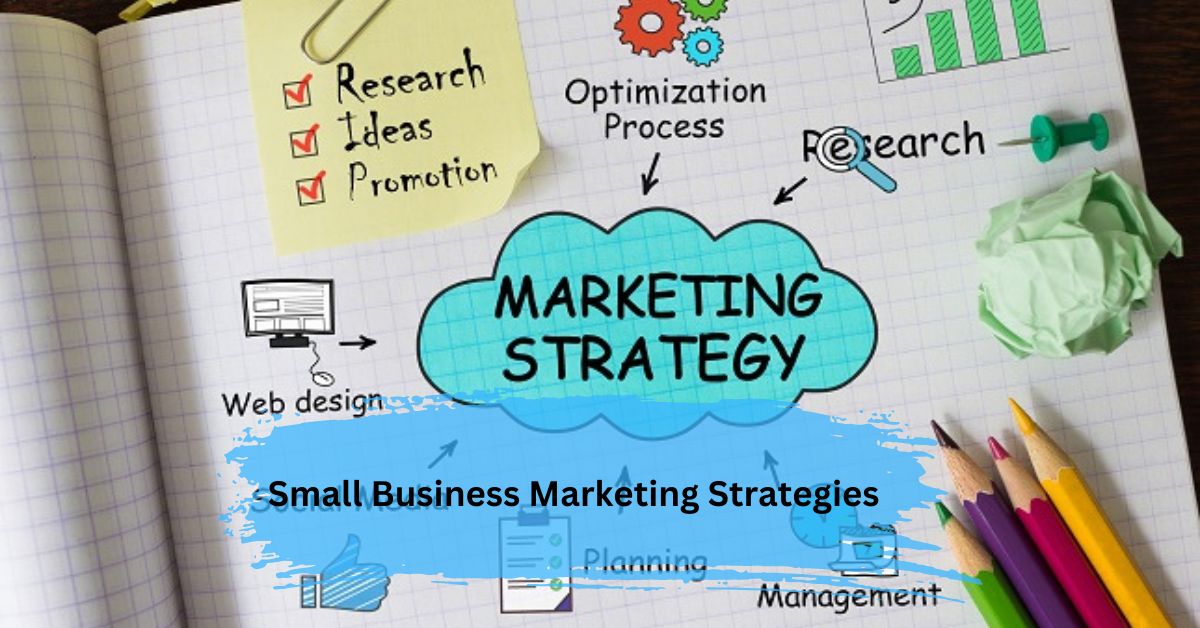Small Business Marketing Strategies – Boost Your Business In 2024!
In today’s dynamic market, small businesses need to be noticed. To succeed, they should use marketing strategies that fit their specific needs and resources.
Small business marketing strategies through a lasting impact in a competitive market.
These strategies involve:
- Audience understanding
- Strong branding
- Online/offline channels
- Cost-effective ads
- Customer loyalty
- Adaptive analytics
This article guides the full details about the strategies to grow your small business. Let’s get started!
Target Audience And Strong Brand Building – Start With A Basic Understanding!
Before diving into marketing initiatives, it’s crucial to define and profile your ideal customer. Conduct thorough market research to identify your target demographic, their preferences, and behaviors. This knowledge forms the foundation for crafting personalized marketing campaigns.
A compelling brand identity is essential for small businesses. Create a memorable business logo and tagline that resonates with your target audience. Consistency is key – ensure your brand is represented uniformly across all online and offline platforms.
Strategies To Do Small Business Marketing – From Online Presence To Analytics!
- Online Presence and Digital Marketing
- User-Friendly Website: Invest in building a responsive and user-friendly website. Optimize it for search engines (SEO) to improve visibility. Ensure that your website reflects your brand and provides a seamless experience for visitors.
- Social Media Platforms: Utilize social media platforms to connect with your audience. Choose platforms that align with your target demographic and engage in meaningful conversations. Regularly update content and leverage social media advertising to broaden your reach.
- Content Marketing: Create valuable and relevant content to establish your expertise in the industry. Blog posts, videos, and infographics can be powerful tools for attracting and retaining customers.
- Leveraging Email Marketing
- Building an Email List: Encourage website visitors to subscribe to your newsletter. Offer incentives such as exclusive discounts or valuable content in exchange for their email addresses. Building a robust email list is a valuable asset for ongoing marketing efforts.
- Crafting Engaging Newsletters: Create newsletters that provide value to your subscribers. Share industry insights, promotions, and updates about your business. Personalize content to cater to different segments of your audience.
- Personalization and Segmentation: Segment your email list based on customer preferences and behaviors. Personalized emails have higher engagement rates. Use data to tailor your messages and offers to specific customer groups.
- Networking and Partnerships:
- Local Networking Events: Participate in local events and engage with the community. Networking provides opportunities to build relationships with other businesses and potential customers.
- Strategic Partnerships: Explore partnerships with complementary businesses. Cross-promotions and collaborations can expand your reach and bring mutual benefits.
- Sponsorship Opportunities: Consider sponsoring local events or teams. Sponsorship not only increases brand visibility but also demonstrates your commitment to the community.
- Utilizing Cost-Effective Advertising
- Google Ads and Facebook Ads: Even with a small budget, businesses can benefit from targeted online advertising. Google Ads and Facebook Ads allow precise targeting to reach potential customers.
- Influencer Marketing: Identify local influencers or industry experts who align with your brand. Influencer marketing can be a cost-effective way to leverage the audience of those with established credibility.
- Guerrilla Marketing Tactics: Get creative with unconventional marketing approaches. Street art, flash mobs, and other guerrilla tactics can generate buzz without breaking the bank.
- Must do Customer Retention:
- Loyalty Programs and Discounts: Rewarding repeat customers builds loyalty. Implement loyalty programs or offer exclusive discounts to incentivize customers to return.
- Customer Feedback: Regularly collect and analyze customer feedback. Understand their needs and concerns, and use this information to enhance products or services.
- Positive Customer Experience: Provide excellent customer service to create a positive experience. Satisfied customers are more likely to become repeat buyers and brand advocates.
- Analyzing Marketing Metrics
- Key Performance Indicators (KPIs): Identify relevant KPIs to measure the success of your marketing efforts. Metrics like conversion rates, website traffic, and customer acquisition costs can provide valuable insights.
- Tools for Tracking and Analyzing: Utilize analytics tools such as Google Analytics and social media insights to track performance. Regularly review data and adjust strategies based on the analysis.
- Adjusting Strategies Based on Analytics: Be agile in adapting your marketing strategies. If certain channels or campaigns aren’t delivering the expected results, make data-driven adjustments to optimize performance.
What Are The Future Trends In Small Business Marketing – Navigate Tomorrow!
The future of small business marketing is poised for exciting advancements, driven by technological innovations and evolving consumer behaviors. Stay ahead of the curve by exploring emerging trends in marketing.
- Artificial Intelligence (AI): Expect AI to revolutionize small business marketing by facilitating personalized customer experiences through chatbots, predictive analytics, and automated campaigns.
- Voice Search Optimization: With the rise of voice-activated devices, businesses must prioritize optimizing content for voice search to meet changing user behaviors.
- Video Marketing: The ascent of video marketing continues, especially with the popularity of short-form videos on platforms like TikTok, presenting opportunities for engaging content.
- Augmented Reality (AR) and Virtual Reality (VR): Anticipate the integration of AR and VR experiences to enhance customer engagement, allowing businesses to showcase products in immersive and interactive ways.
- Sustainability-Focused Marketing: As environmental concerns grow, small businesses should explore marketing strategies aligned with sustainability, appealing to the values of eco-conscious consumers.
Here you go! Adapting to these future trends will empower small businesses to stay competitive, connect meaningfully with their audience, and navigate the evolving landscape of digital marketing successfully.
Frequently Asked Questions:
What role does user-friendly website development play in small business marketing strategies?
A user-friendly website is crucial for small businesses, enhancing online visibility, optimizing search engine performance, and providing a seamless customer experience. It plays a pivotal role in building trust and driving conversions.
How can small businesses effectively leverage guerrilla marketing tactics for promotion?
Small businesses boost promotion using guerrilla marketing: creative, low-cost tactics like street art or flash mobs create buzz, enhance visibility, and amplify the impact on social media for broader reach with limited resources.
What is the significance of sustainability-focused marketing in small businesses?
Sustainability-focused marketing in small businesses aligns with environmental concerns, appealing to eco-conscious consumers, fostering loyalty, and building a positive brand image.
Conclusion:
Effective marketing strategies are vital for the success of small businesses. By understanding the target audience, building a strong brand, and embracing various marketing channels, small businesses can create a lasting impact in their respective industries.
Stay informed, adapt to changes, and consistently evaluate and refine your marketing approach for sustained growth.




